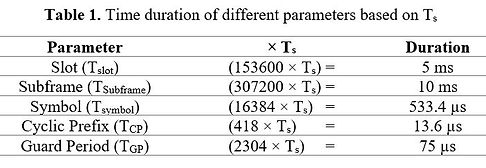Md. Asif Ishrak Sarder

Md. Asif Ishrak Sarder
Research & Projects
Narrowband IoT (NB-IoT)
Performance Enhancement of NB-IoT devices with the Incorporation of a modified subcarrier bandwidth and FFR
Meeting the requirements of the Low-Power Wide Area Network (LPWAN), the Narrowband Internet of Things (NB-IoT) is one of the most promising technology being come across to date. In comparison to other LPWAN technologies that operate using the unlicensed spectrum like SigFox (min. bandwidth 100 Hz) and LoRa (min. bandwidth 125 kHz), a licensed spectrum utilizing technology NB-IoT (bandwidth 180 kHz) can provide much more bandwidth, data-rate and allows swift operation of a wide range of applications.
Currently, NB-IoT framework is operating on 180 kHz bandwidth with 15 kHz subcarrier spacing using OFDM for Downlink transmission and 3.75 kHz and 15 kHz subcarrier spacing using SC-FDMA for Uplink Transmission for single-tone and multi-tone transmission, respectively.
To increase the system capacity for operations involving Short Message Based IoT Devices in 5G, we have proposed a new physical layer resource grid based on a subcarrier spacing of 1.875 kHz that can ensure necessary stable wireless service for the NB-IoT devices located in the Cell Edge area as well as improvement in the service quality (QoS) for the UEs located near the eNodeB, by incorporating the Fractional Frequency Reuse (FFR) technique in different regions.
The new frame structure has been designed by taking into account the necessary factors:
-
DMRS Positioning
-
Length of CP
Other Necessary Parameters, Figures and Results achieved till now (without using FFR) has been provided bellow:
In the Time Domain:
Considering a factor representing necessary period for sampling an SC-FDMA symbol used,
Ts = 1/(16384 × 1875) seconds = 3.255×10^(-8) seconds.

So, a radio frame contains two slot with eighteen SC-FDMA symbols in total during 10ms time span. To avoid probable collision discussed above, DMRS has been allocated in the symbol no. #6 in the proposed NB-IoT uplink framework.
In the Frequency Domain:
-
1.875 kHz Subcarrier spacing
-
a total of 96 subcarrier within 180 kHz transmission bandwidth

Fig: Proposed Uplink Resource Grid (with 1.875 kHz Subcarrier Spacing)

Fig: Data/DMRS symbol arrangement in scaled slot/subframe for 1.875 kHz subcarrier spacing
Performance of the proposed scheme in comparison with existing ones in Uplink:
This is an extension of our Undergraduate Thesis work where we aim for even better system capacity increase and overall network performance improvement by incorporating the FFR technology.